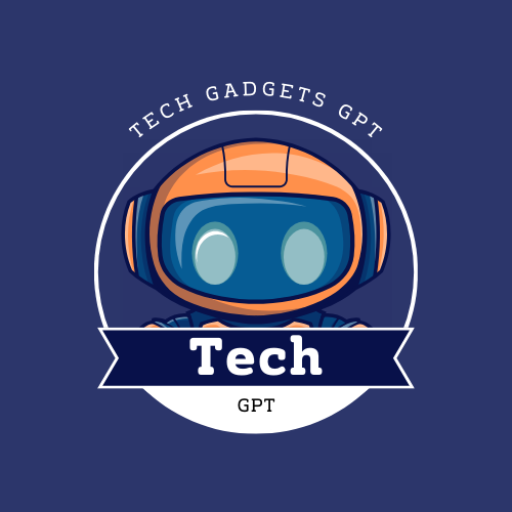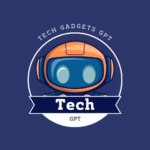Artificial Intelligence (AI) has become a transformative force, reshaping industries and societies at an unprecedented scale. However, its rapid development has sparked pressing questions about governance, ethics, and public trust. How can nations create policies that ensure AI benefits everyone while minimizing risks? The Future of Life podcast delves into these critical issues, offering valuable insights into AI global governance, national policies, and building public trust.
Understanding AI Global Governance
AI global governance refers to the collective effort of countries, organizations, and stakeholders to establish rules and frameworks for AI development and use. This involves creating systems to:
- Ensure ethical AI applications.
- Prevent misuse and potential harm.
- Promote international cooperation to avoid regulatory fragmentation.
For example, the European Union’s AI Act seeks to regulate high-risk AI systems, emphasizing transparency and accountability. The United Nations has also initiated discussions on creating a global AI regulatory body to align efforts across countries. Similarly, the OECD’s AI Principles offer a blueprint for responsible AI development, focusing on inclusivity, sustainability, and fairness.
Why It Matters: Without effective governance, AI could exacerbate existing inequalities, amplify biases, and even pose existential threats. International collaboration is essential to align standards and share best practices, ensuring AI serves as a tool for collective progress.
National Policies: A Patchwork of Approaches
Different nations are tackling AI governance in ways that reflect their unique priorities:
- Europe: The EU’s AI Act is a landmark initiative focusing on risk-based regulation. It aims to classify AI systems based on their potential impact, with strict rules for high-risk applications.
- United States: The U.S. favors a flexible, sector-specific approach, emphasizing voluntary guidelines over rigid regulations to encourage innovation. The National Institute of Standards and Technology (NIST) recently released a framework to promote trustworthy AI.
- China: China’s strategy combines rapid AI development with strict government oversight, aiming to dominate the global AI landscape while maintaining control over its use. The country’s New Generation AI Development Plan highlights its ambition to lead AI innovation by 2030.
- India: India is focusing on using AI for social development, such as improving healthcare, agriculture, and education, while working on ethical guidelines for AI deployment.
These policies reflect varied perspectives on balancing innovation with responsibility. However, the lack of a unified global approach could lead to conflicting standards, complicating international collaboration and compliance.
The Role of Public Trust in AI Governance
Public trust is a cornerstone of successful AI adoption. Without it, even the most advanced systems risk rejection. Building trust requires:
- Transparency: Clear explanations of how AI systems work and their decision-making processes.
- Accountability: Mechanisms to address errors, biases, and unintended consequences.
- Ethical Design: Ensuring AI aligns with societal values and respects individual rights.
Engaging Communities: Policymakers and developers must actively involve the public in discussions about AI’s role, addressing fears of job displacement, surveillance, and bias. Open dialogue can demystify AI and foster a sense of shared responsibility.
Case in Point: In 2024, a healthcare AI system in Europe faced backlash due to opaque decision-making processes, leading to public outcry and calls for stricter regulations. This incident highlights the importance of transparency in building trust.
The Danger of an AI Arms Race
As nations vie for AI supremacy, the risk of an “AI arms race” looms large. This competitive mindset can lead to:
- Compromised Safety: Rushed development prioritizing speed over thorough testing.
- Global Instability: Divergent regulations and geopolitical tensions.
- Ethical Oversights: Shortcuts in addressing biases and ethical concerns.
Collaborative efforts, such as international treaties and shared research initiatives, are crucial to mitigate these risks. Organizations like the Future of Life Institute advocate for cooperative frameworks that prioritize humanity’s collective welfare over individual gains.
Insights from the Future of Life Podcast
The Future of Life podcast, featuring experts Allan Dafoe and Jessica Cussins, offers a deep dive into these issues. Key takeaways include:
- Aligning AI with Human Values: The need to ensure AI systems are designed to prioritize ethical principles and societal well-being.
- Fostering Global Cooperation: Encouraging nations to work together to address common challenges and avoid regulatory fragmentation.
- Public Engagement: Highlighting the importance of involving diverse voices in shaping AI policies.
The podcast also discusses real-world scenarios where governance failures have led to unintended consequences, emphasizing the urgency of proactive policymaking.
Emerging Trends in AI Governance
Looking ahead, several trends are shaping the future of AI governance:
- AI Audits: Companies are increasingly adopting third-party audits to ensure their AI systems meet ethical standards.
- Decentralized Governance Models: Blockchain technology is being explored to create transparent and accountable AI governance frameworks.
- AI for Social Good: Governments are leveraging AI to address global challenges such as climate change, poverty, and public health crises.
Conclusion
AI global governance is not just a regulatory challenge; it is a moral imperative. By balancing innovation with responsibility, fostering international collaboration, and building public trust, we can harness AI’s potential for the greater good. As highlighted in the Future of Life podcast, our collective actions today will shape the future of AI and its role in society. Let’s work together to ensure that future is one of equity, transparency, and shared progress.







ck9w6x
[…] Google’s Vertex AI platform is known for its ability to train and deploy machine learning models at scale. Anthropics’ Citations feature integrates seamlessly with Vertex AI, bringing new possibilities for developers and enterprises alike. […]
[…] AI governance refers to the set of principles, rules, and frameworks that ensure AI technologies are deployed responsibly, ethically, and transparently. For boards, it’s a tool for balancing AI-driven innovation with risk mitigation. […]
reparacion de maquinaria agricola
Dispositivos de equilibrado: clave para el rendimiento suave y optimo de las equipos.
En el campo de la avances contemporanea, donde la productividad y la confiabilidad del sistema son de gran relevancia, los dispositivos de ajuste tienen un papel vital. Estos equipos especificos estan desarrollados para ajustar y estabilizar elementos rotativas, ya sea en herramientas manufacturera, automoviles de movilidad o incluso en aparatos domesticos.
Para los tecnicos en mantenimiento de dispositivos y los ingenieros, operar con sistemas de calibracion es fundamental para garantizar el desempeno fluido y estable de cualquier mecanismo movil. Gracias a estas opciones innovadoras innovadoras, es posible disminuir significativamente las oscilaciones, el estruendo y la presion sobre los sujeciones, prolongando la tiempo de servicio de piezas importantes.
Asimismo significativo es el papel que cumplen los aparatos de equilibrado en la soporte al usuario. El ayuda profesional y el soporte constante empleando estos sistemas posibilitan ofrecer prestaciones de optima calidad, incrementando la satisfaccion de los clientes.
Para los responsables de negocios, la contribucion en estaciones de ajuste y medidores puede ser esencial para optimizar la efectividad y productividad de sus dispositivos. Esto es particularmente trascendental para los inversores que gestionan pequenas y modestas empresas, donde cada punto importa.
Tambien, los equipos de ajuste tienen una extensa utilizacion en el area de la prevencion y el control de estandar. Permiten encontrar potenciales defectos, reduciendo reparaciones elevadas y averias a los aparatos. Tambien, los datos extraidos de estos dispositivos pueden utilizarse para optimizar procedimientos y mejorar la visibilidad en sistemas de investigacion.
Las campos de uso de los sistemas de equilibrado abarcan numerosas ramas, desde la produccion de ciclos hasta el seguimiento del medio ambiente. No afecta si se refiere de extensas producciones manufactureras o reducidos establecimientos hogarenos, los dispositivos de calibracion son indispensables para promover un operacion optimo y sin detenciones.